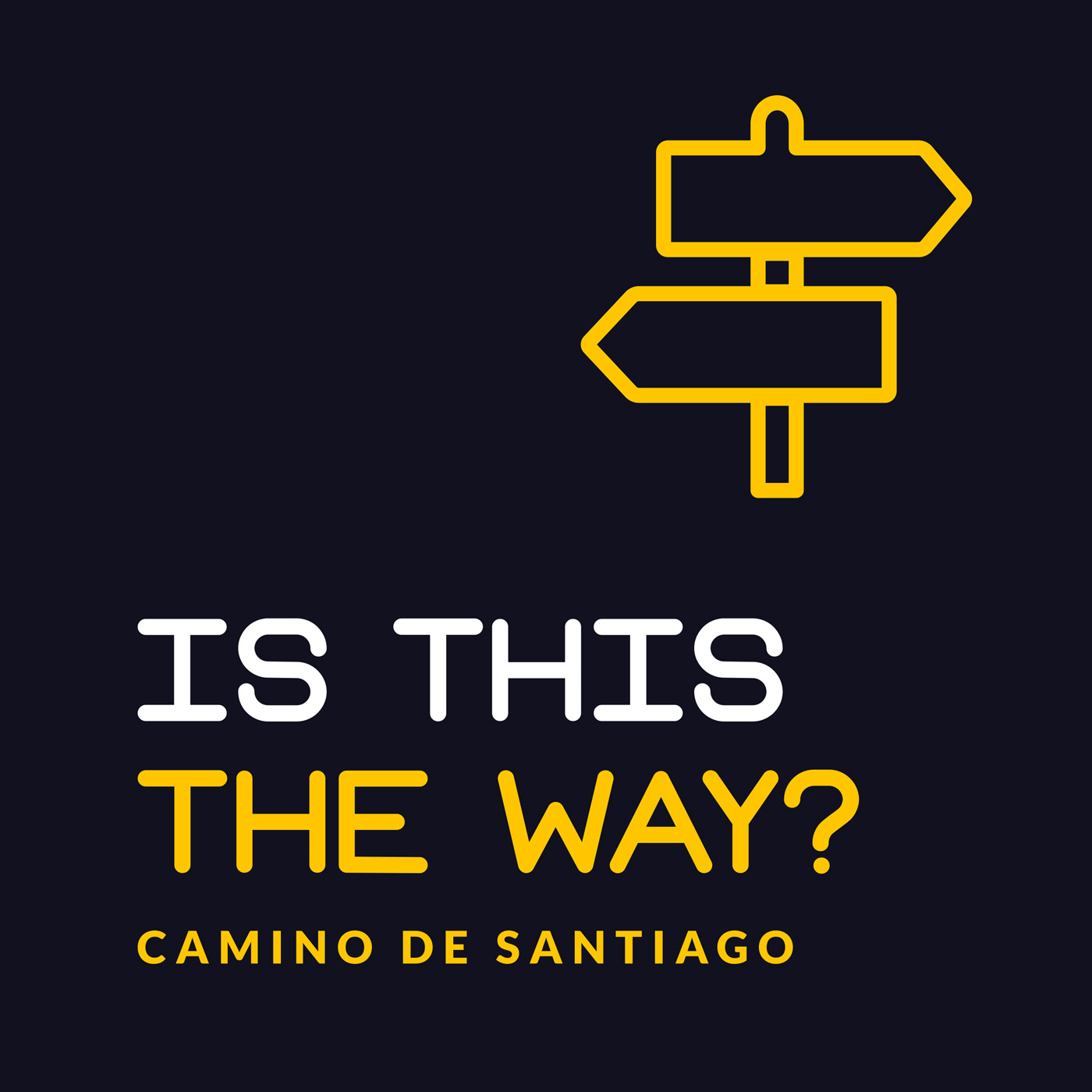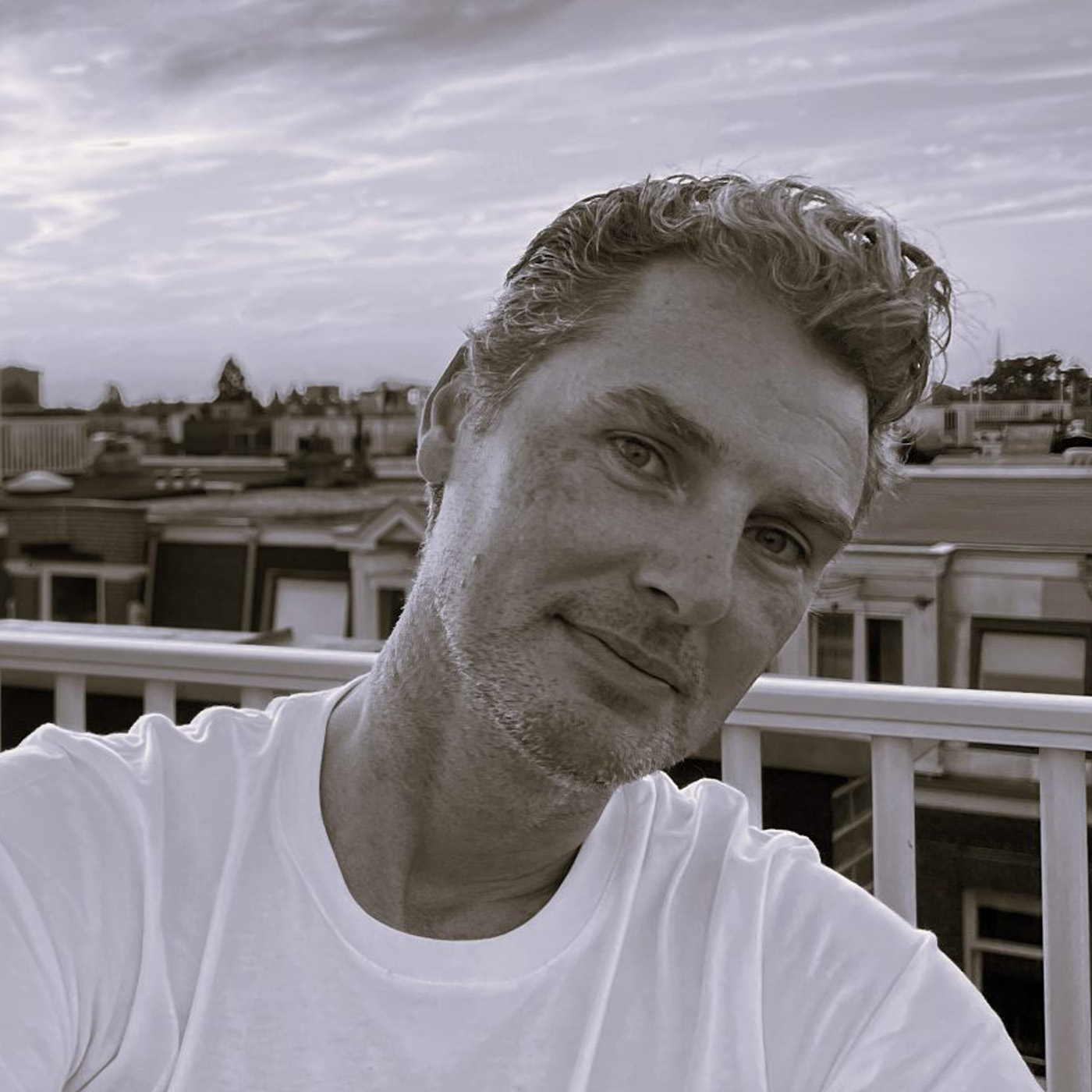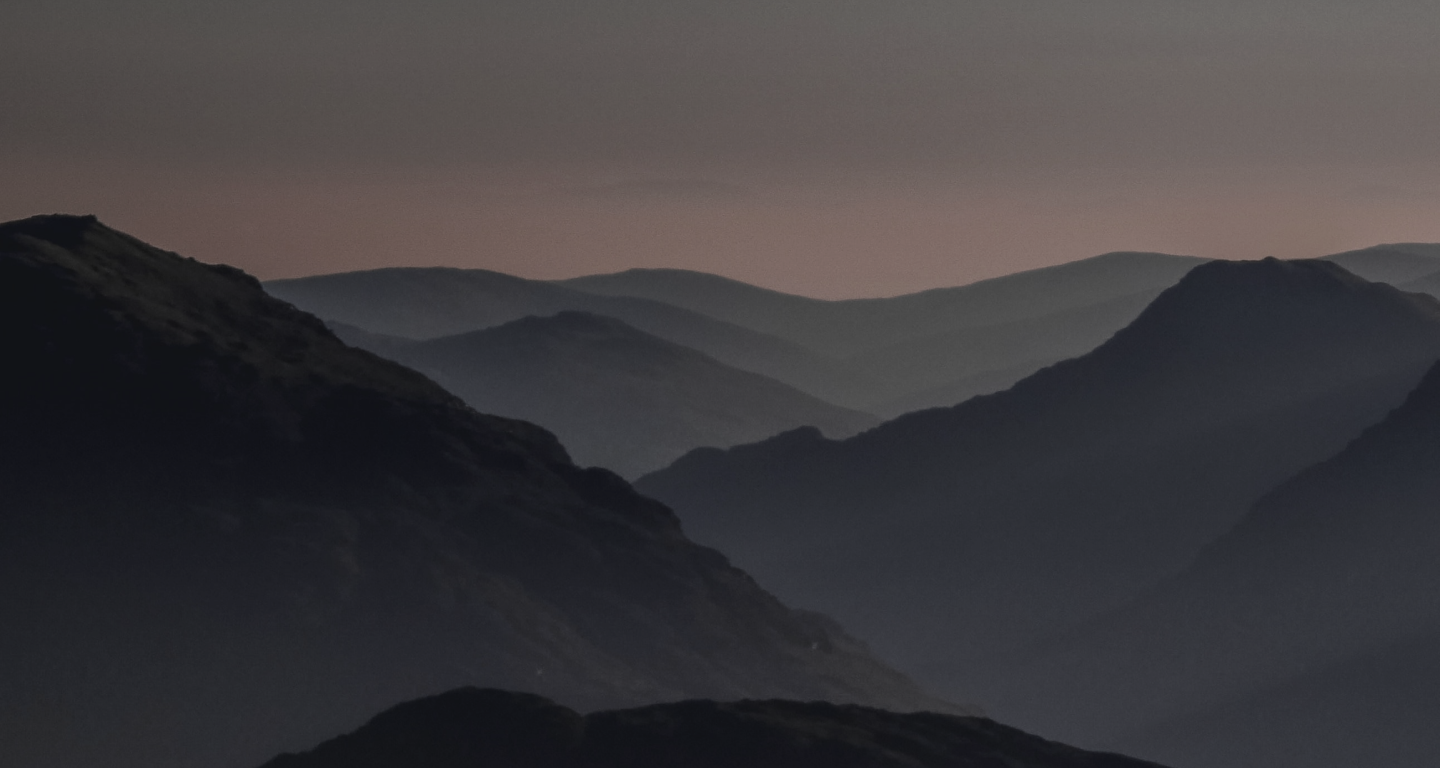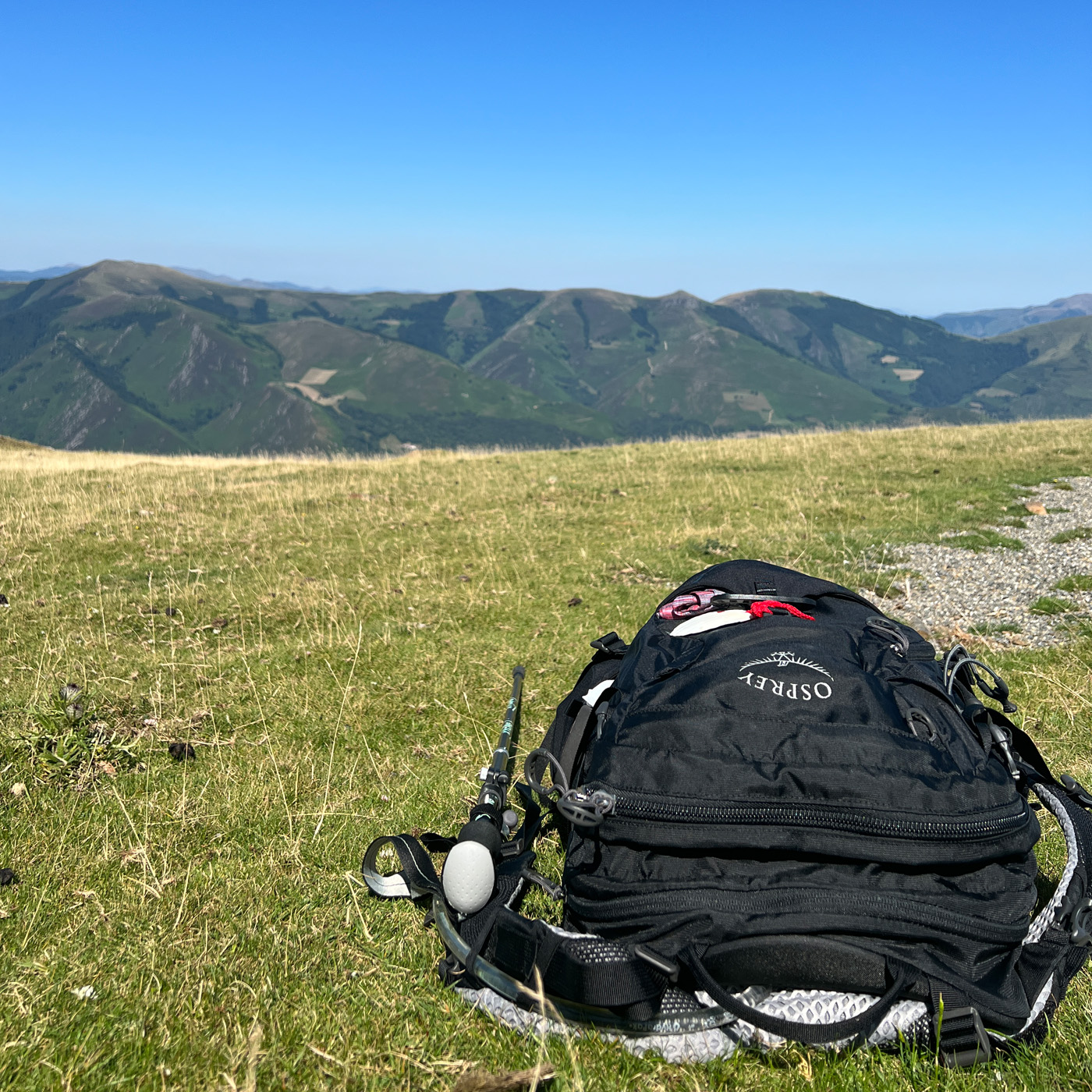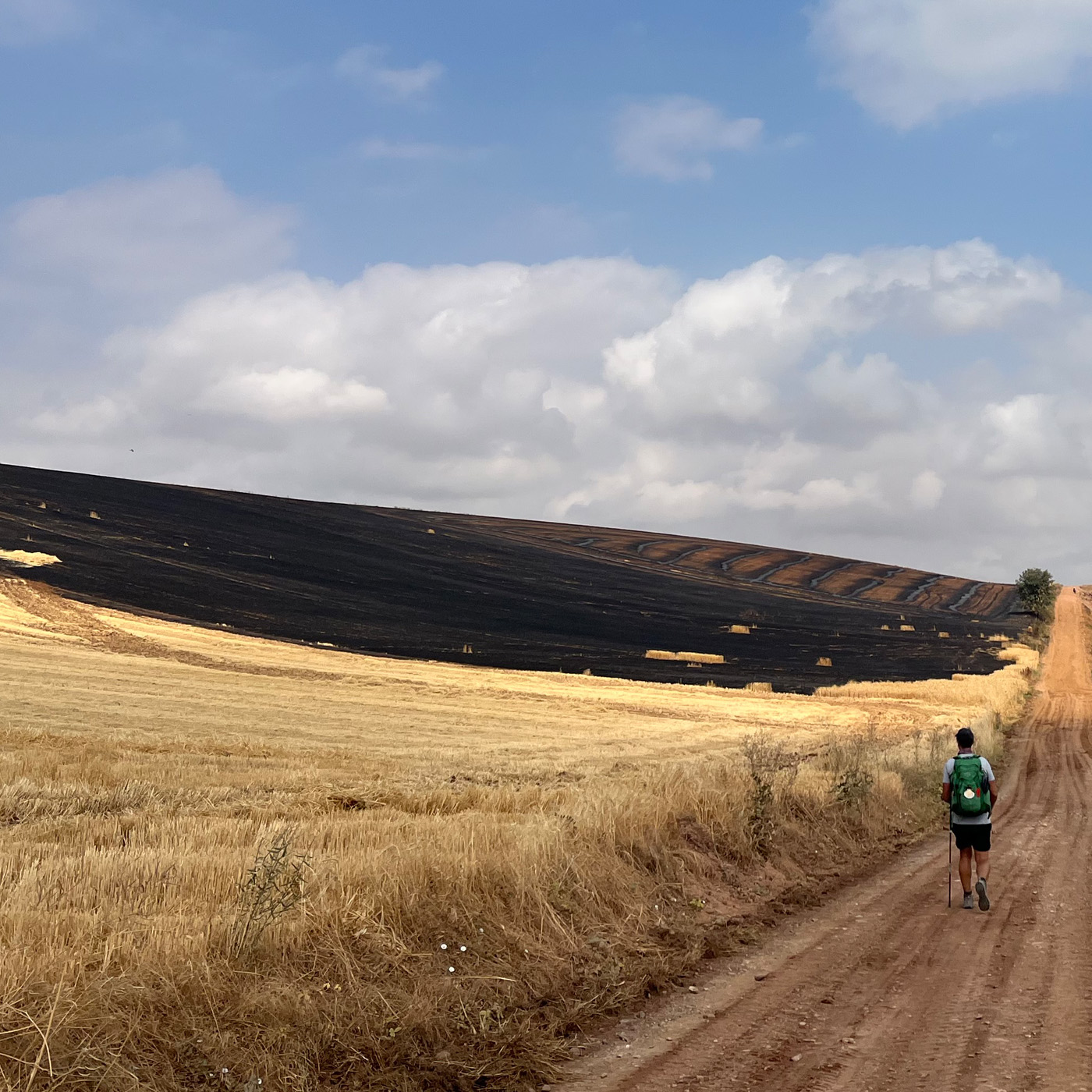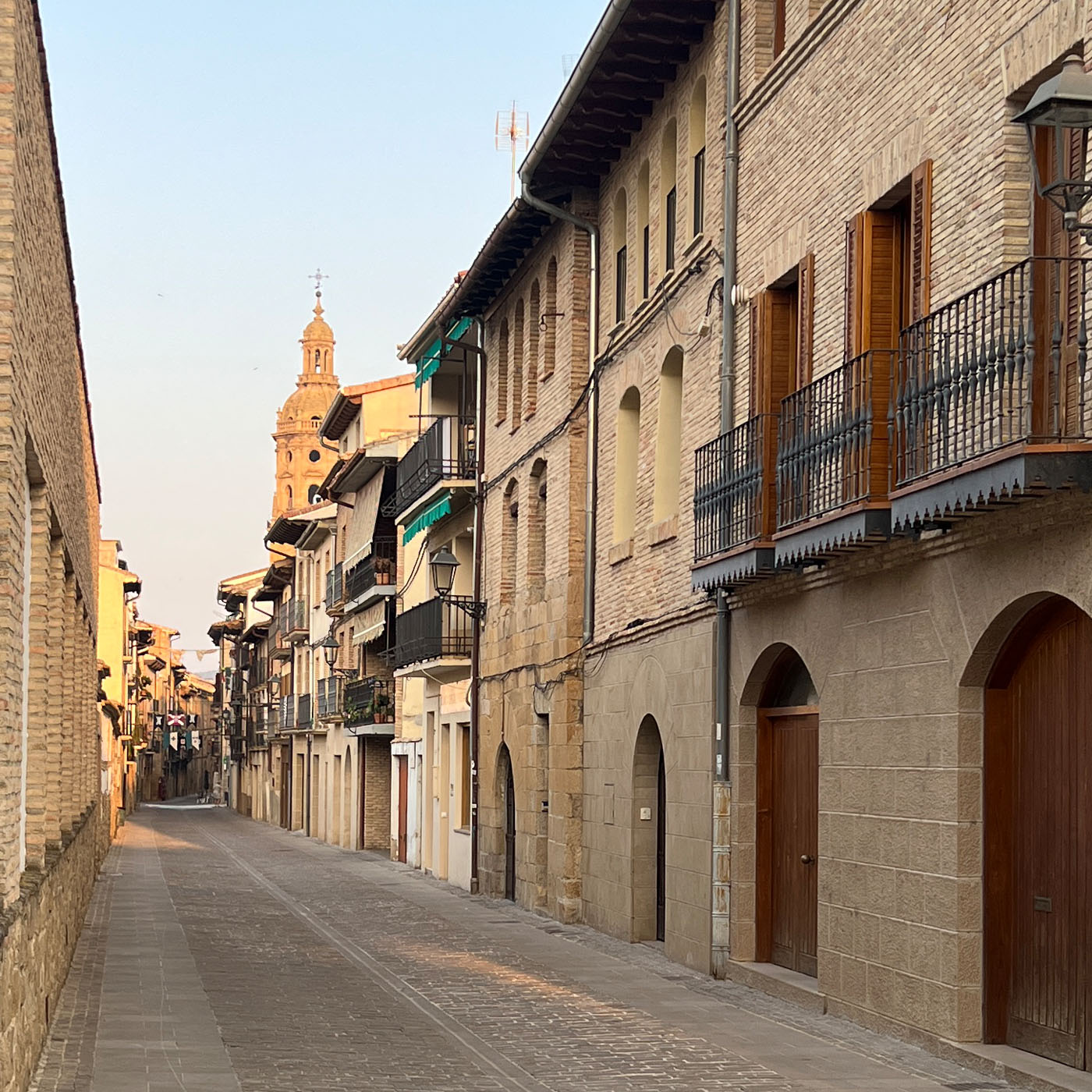Episode Transcript
WELCOME & WHAT TO EXPECT
We quit our jobs, left our home and walked 933 kilometers across Spain. Join me, Francesca, and me, Gaven, in this escapist travel diary as we hike the famous Camino de Santiago or the Way and learn more about what it's like to undertake this epic journey. It’s a story of highs, lows, blisters and getting new perspectives on life… and more blisters!
Hello everyone and welcome to Is This The Way? – a podcast where we walk the Camino de Santiago, which is very epic 800 plus kilometer hike across Spain.
In this inaugural episodes we will cover what the Camino is, why we're doing it, what we hope or hoped to learn, and then take you through our journey from packing to arriving at the start of the walk. There's a lot going on, so let's get started.
OK, so I guess in essence, this podcast is a travel diary. Great for voyeurs, people who love travel, maybe don't have all the time to travel. Anyone who's interested in what the Camino might be, anyone who's interested in hiking and exploring things. So when we embarked upon this, we packed our lives up, we quit our jobs, we left our homes, and we took off to Europe to walk across Spain.
One of the things we wanted to achieve was a little bit of detachment from technology, because our lives are so riddled with phones and emails and notifications and laptops and computers and everything all the time. Hunched over desks. Particularly for myself because I work in tech as well. I'm in front of a screen all the time.
I work in government and somehow I'm also in front of a screen all the time!
One of our big goals was to get away from all of that and not have a dependence on technology and not be checking the news or looking at social media or any of these kind of things. So, what would be the perfect way to do that? Just make a podcast as you go, because that won't be intrusive at all.
But I think it was a great way to track how our progress went, how we felt and the sort of things that we learned over the course of the journey. It was a six week trip, all in all, with all of the walking and the rest days and I think it was quite transformational.
The way that it worked out is that we recorded a little section in the morning before we went, so just a minute or two setting up the day. And then when we arrived, we would sit down and have a drink and unwind, and then we would talk about what we just experienced. And now us sitting down here, you know, many months later, we can look back wistfully through, you know, rose tinted glasses and reflect on and kind of elaborate on some of the things that we did during that time.
So you'll be literally walking the Camino with us. You get all the vibes of the Camino without the many, many blisters, so many blisters… And you can listen to our morning expectations about what we're going to do. And then laugh at us when you hear our evening reflections about what we just did, as they're often quite different. Hopefully that kind of sets the scene the podcast and what to expect.
WHAT IS THE CAMINO?
And to properly introduce the Camino, should we talk about what the Camino actually is? The Camino de Santiago is as we've said, this really long walk, it's 500 miles or 790 kilometers across Spain. To put that in perspective, if you look at a map, it's literally the width of Spain. Well, no, no, it's almost the width of Spain. And then there's an extra bit that you can do at the end, which is a separate Camino, the Camino Finisterra, which takes you all the way to the coast. So we walked coast to coast across Spain.
The Camino de Santiago, the translation into English is ‘Camino’ is this quite magical word that means journey or the way. It's originally a religious pilgrimage. It's been popular for a little while, about 1000 years or so, people have been hiking the way of Saint James.
And the reason was he was a disciple of Jesus, the patron St. of Spain, and he was martyred and supposedly according to biblical lore he was carried along this route and then buried in Santiago de Compostela. And I think they have the coffin with the bones in the cathedral in Santiago, don't they? Yeah, they do, yeah.
So we should say that neither of us are particularly religious, so we did this as a nice change of pace, a way to reset our lives a little bit, to be outdoors, to have a simpler life for a little while and think about what's important as we're making some really big changes. We didn't walk it for religious reasons, but a lot of people do. But that wasn't our motivation, we certainly don't ever attend to offend anyone. And if we do, we apologize for that. Everything's meant in the best possible way. Definitely. So yeah, I mean, a lot of people walk for religious reasons, as you say. And one of the people that we saw almost every day was a monk. Literally every day, actually. So he started on the same day as us and finished on the same day in Santiago. Yeah. So religion is fundamentally a very, very important part of the Camino. But lots of people like us walk for other reasons for cultural or spiritual or health. And a lot of people do it, either to reflect on some kind of change or, there's usually some kind of transformation or the defining theme is everyone is either searching for something or has found something or, sort of seeking this change of pace and change of life.
A lot of people, I think, are trying to deal with something traumatic or work out what they're doing in their life or recover from something, or contemplating big changes. I mean, for us, we made a big change. we lived in Singapore for quite a long time, it was our home, which we've now left. So we're all in a little bit of disarray at the point we're going on the Camino. We both have had and now have again, but had very good jobs in Singapore that for a lot of people, it might seem quite crazy to quit. But it was the right decision and now we - and if you're not happy, then you should do something that makes you happy – yeah, exactly. So yeah, we made the collective decision to pack up. And this was the best way to reset our day-to-day lives. A clean break, leaving everything behind, clear our heads, think about what we wanted to do, where we wanted to go. I think it was a time when we knew where we were going. We're going to land in Australia in six or seven months. And some time to think about what you want to get out of that and how you're going to approach it and you don't want to just like have a break and they go straight back into the same routine you had before.
I don't even know how we stumbled across it, but a few years ago we walked the last 130 kilometers of the Portuguese Camino. Basically no one that we knew had walked the Camino, it wasn't something that we talked about with anyone before. So we sort of just stumbled into this thing and we walked the last 130 kilometers, and we started on the Portuguese border and then we walked up to Santiago to Compostella and we just had this really nice time. And I think once we got there, we realized that we didn't really want to finish yet and we sort of made a marker in our calendar that at some point in the future we would love to take the time and walk the full Camino de Santiago, the Camino Frances. The challenge is like, when do you ever find the time to do these sorts of things? Like how do you ever actually take in reality that length of time off work and not being kind of worried or stressed about it?
If you can find any way to do it, go and do it. Maybe you can't find the whole six weeks. A lot of people walk like a week a year or two weeks a year. And you can do that in segments. You just keep your passport and you keep it in stamps along the way from when you start until the end. And the only hard requirement is that those two stamps a day for the last 100 kilometers so that you can get your your compostella in the end. Or alternatively, you can just go and walk the last 100 or so kilometers. If you do, I'd very strongly recommend that you do the last 100 or so kilometers of the Portuguese Camino, because it's a lot less heavily trafficked than the French one, which is more well known as the traditional route. And that last 100 kilometers has a lot of people. It gets very busy, very crowded and you don't really get the proper feeling. So I'm really glad that we did the end of the Portuguese Camino first, because it was beautiful and it was a fantastic experience, whereas if we'd just done the end of the French Camino. We probably wouldn't have wanted to come back and do the whole thing. Yeah, it was a different experience, just at that end. Whereas the rest of that walk was much like the end of the Portuguese one was. So yeah, even with like a week, four days or something, I think we did. You could walk the end of Portuguese Camino and get a taste for it.
Definitely. However, I would just say if you can, taking that full time to do the full thing, if you can, it's wonderful. But it's just one of those things where quite a lot of people wait until they're retired to do it so that you have more time. But it is quite a physical walk and you'll find out, even from our first day, I think we sound out of breath like by the time we finish because it's quite physically taxing. So if you can do it sooner, when you know, when you're a bit younger or you know you've got your health and all that kind of thing, it's basically, I would just advise that if you can go as soon as you can, yeah, I think you get a lot more value out of it.
We've had multiple friends, parents who have become very ill or passed away. And they're people who have been waiting their entire lives to retire and go and do these things. And then you don't get to do these things. That really makes you think about, how long do you want to wait and what guarantee do you have that you'll actually be able to do them?
So yeah, I mean, obviously everyone has their own story, their own journey. But hopefully through us and this podcast, we can give you some guidance or maybe a bit of a nudge to undertake that journey that you've been maybe considering in the back of your mind as well.
KEY FACTS ABOUT THE CAMINO
We're going to talk about some of the really cool things about why we like the Camino and some of the facts and stats behind it.
There are lots of different Caminos that you can walk. The Camino Frances is the one that we're focusing on. It's the longest and the original route based on the way and St. James and everything. But there are lots of other different ones as well that you can do: the Portuguese way, the English way, the Camino Finisterra, which is the last little bit from Santiago onwards to the coast. There was the Camino Primitivo, which walks on less sealed roads, more natural paths. If you look at the map that's available, it shows that there's routes coming from all over the place. And even the Portuguese way, there's different routes you can take and there's different branches along the French one as well that we did. Sometimes you take some detours and then rejoin later on. So there's a lot of different options to do there.
This Camino has literally been walked since medieval times and that's reflected across the whole Camino, you see these amazing churches, these bits of history, villages and towns. All this wonderful history. And you can soak it in. For people walking the Camino all those years ago, you'd walk in big groups, for safety and to avoid these bandits who would rob you, and it previously took about six months to a year, so it would be this really epic pilgrimage. And we did it a lot faster than that. It took us 35 walking days to get from one end to the other and five rest days. So two days during and then three once we reached Santiago before doing the Finisterre at the end. So technically we did the Camino with only two rest days, to get to the end. That's really mad if you think about it. I feel tired just saying that.
The Camino de Santiago was the source of the world's first travel guide, the Codex Calixtinus, created in the 12th century. Obviously, pilgrims in the 12th century didn't have the luxury of being able to read and write most of the time, but even if they could, you couldn't really carry around a massive book with you. Also probably couldn't afford one, but it was written, and it was written by someone who walked the Camino at that point in time. And there was a guide on routes to take, places to avoid things, to be careful of where to find water, where to find lodgings, times of year to ago. So all the things you'd find in modern travel guide. So that's pretty cool. I didn't know that until we did it. And I think the original Codex Calixtinus in Santiago de Compostela, in the cathedral. I'd love to go find it. We didn't find it. I'd love to see it. So if anyone has found it, let us know because we'd love to see it.
One of the things that I really, really like about the Camino is that you is that it is a pilgrimage and therefore you are a Pilgrim walking this journey. So everyone starts and everyone who's undertaking it is either a Pilgrim or a Pellegrino, which is the Spanish term for Pilgrim and used interchangeably. And the way that you can recognize that is that everyone has a scallop shell, which is essentially the icon of the Camino. It relates in some way to St. James, and everyone wears one on their backpack. The first thing you do when you get to the Pilgrim's Office you're ready to go, is you tie your scallop shell to your backpack. It hangs on the back. And it's a really visual symbol of the fact that you're undertaking this journey.
It's almost like a sense of community that you get because everyone has this, everyone knows that you're also walking the Camino. You're there for the same to do the same thing, if not for the same reasons. But you feel like a community with the people you're walking with. It's a really uniting factor. And even after that, because we travelled elsewhere, but we still had our scallop shell on the back. People would say, oh, you've been walking the Camino or, oh, nice have you been on the Camino recently? Yeah, I think it was in Madrid that that happened a couple of times, which is just afterwards. So it's, it's sort of this quite iconic thing that I didn't really appreciate at the time. But, you know, I'd love to keep mine on my backpack and continue to wear it as a marker of the fact that we've walked this crazy journey.
So the other thing that's a bit different and unique to the Camino is that you have essentially a Pilgrim's passport, which is known as a credential in Spanish, and this is your passport for your journey. You get stamps along the way at different hostels, different restaurants, different unique churches and things. And it documents your progress. It's actually really fun because you can get wacky stamps in different places. And the aim of this passport is that when you get to Santiago de Compostela, you get your Compostela and Compostela means certificate of completion. Or participation, depending on how far you walked.
As long as you walk the last 100 kilometers and you get 2 stamps a day in your passport, then you go to the Pilgrims Office in Santiago and you present your passport and they'll look at it and they'll give you a certificate saying that you've walked the Camino. However, if you're starting from the beginning in Saint Jean Pied de Port and you go into the Pilgrim's Office, you get a stamp from the Pilgrim's Office there because that's the official start point. So it's pretty important to do that - don't forget to get a stamp from the Pilgrim's Office right at the start, because then when you get right to the end and they ask you where did you start from, you say Saint Jean Pied de Port and they will check your passport. You don't have to have stamps every day or anything, It's only the last 100 kilometers where you have to have two a day. But if you can show the sequence of stamps from the start to the end, you'll get a different certificate which records when you started, when you finished, and the distance that you walked, which is really neat.
Remember to get your credential or your Pilgrim's Passport. We ordered ours in advance and we'll put the link online because it's like really cheap. A couple of euros. They're not very expensive at all and you can normally buy them at the Pilgrim's Office at the start, but occasionally they'll be out of stock. Or the other thing is, if you if you're getting there like in the evening and you want to start walking first thing the next morning, you probably want to have it with you already. We don't want to waste too much time. So for us, we got in the day before we started walking and we already had our passports, so we got to stroll over to the Pilgrim Office in the afternoon when it was quieter because everyone else has set off in the morning. Get our passport stamp to get some information. And then go and have some dinner. And that meant the next morning we could set off nice and early, rather than having to wait for the Pilgrim's Office to open like 8 or 9am when it opens up. And in the morning there's a queue of people because everyone wants to get their starting stamp as well. I think that's a very good tip to try and arrive the night before. Plus you want to see the town as well, the start point of the Camino. It's a lovely little town.
One of the things that's nice about the Camino is it's a village to village walk, so at the end of each day you have somewhere to stay. You can camp if you want to. There are campgrounds and there's guides on where to stay and where to camp. Neither of us are campers. We like being outdoors, but we both like having a shower and a little bit of space at the end of the day as well. So that was one of the things that we really liked is because you are walking from village to village, as long as you get to the next village, that's all you have to think about during the day. And then you have somewhere to stay and you have a bed and you can have a shower and you can go out and have something to eat and have a drink and relax a little bit. Even the smallest towns will have like basic amenities.
What's very, very unique is that there's a whole infrastructure to support pilgrims on their journey. So there are pilgrims meals, which is a fixed price fixed course dinner every night. Very, very affordable. There is the Albergues, which are essentially hostile accommodation. Again, really affordable and they're just dotted all along the way. So really you'll never, if you just decide to walk it, you can always find somewhere to stay. So I just love the fact that the whole thing is built and developed and designed to make it as convenient as possible for people to walk this journey.
That is quite different to any other kind of hike that you would do, because there is infrastructure there to support the people who are walking, but without being horrible because you think about that and we're saying like, oh, it's all built up for this. You think it's some kind of like horrible Disneyland trail, but it's not like that at all. It's very authentic. An albergue might be a building in an old church or be a small community buildings like that. It's literally just some cheap accommodation that volunteers operate or the government subsidizes to make affordable accommodation for people who are walking the Camino. And the same with like the pilgrim's meals, right? You can get a good meal which is nourishing, which gives you plenty of energy. It's usually pretty tasty. It comes with some wine, and you pay like 12-15 euros kind of thing for like 3 courses in wine, which is pretty hard to beat.
I just haven't been able to find anything like it. If you are like us and would ideally like to stop somewhere at the end of the day, there's just nothing that is designed in that same way so that you really just feel like you can go from place to place. You've walked through this beautiful scenery, but you can stop in some lovely town at the end of the day, or village, or town, or large town, whatever it may be. So if anyone knows of any other walks that are similar to this, that are kind of like a village to village walk or something somewhere else in the world, let us know because we'd love to go and do them.
Another area that we really liked, as we said before, we were really trying to decouple from tech and try and be as far away from screens and everything that comes with that with the kind of connectivity and luckily, the way that the Camino is designed, you don't actually need your phones at all. Everything is signposted along the way. There's yellow and blue markers with the clamshell design, and there's yellow arrows either marked or painted on things along the way, which show you which way to walk at every turning at every junction. So you never need maps or GPS or phones or anything else. You can just leave that away and not have to think about it. You just follow the arrows or you just ask somebody else. A couple of times at junctions where we're like, we're not really sure, and we've got the guidebook out and had a look, and then some other people came out and maybe one of them knew or maybe they also weren't sure. And it's like, which way should we go here?
And sometimes you almost feel like you could get lost, but then and you're like, oh, we're going the right way. But then you'll see another arrow that's been just painted on by someone or drawn on the floor or carved into sunflowers, there's so many different, very creative ways of marking the journey. It's something that's like quite unique to the Camino is the trail markers and the directions with the yellow arrows that you see all the way along. It just means you flow through it. You'll never - as someone who basically failed at orienteering in my Duke of Edinburgh bronze, I went totally the wrong way - I definitely needed the constant directions, but without having to use technology, which is really refreshing.
It just means you don't think about it so much. I mean, I would probably worry about whether we're going the right way or not. But again, like there's so many other, there's other people walking. You can see the clamshells and you know, they're also walking the way. So even if you haven't seen anything for a little while, if you're seeing one or two other people, then you know you're probably on the right path. And if not, you're getting lost together.
One of the other things that is lovely about the Camino is that you are walking in Spain, one of the most beautiful countries in the world. And we went in, the height of summer, but the weather was just beautiful, sunny, clear skies, fresh pine smells. So, if you're remotely interested in Spain and the culture and tapas and wine and Sangria and all these sorts of things, you'll feel very at home because that's all you'll have for almost a couple of months to pass it all day, every day. It was generally pretty tasty food everywhere, decent wine, nice drinks. I would just say it's probably difficult if you're gluten free, dairy free, because there's a lot of carby stuff, and we had lots of coffees and meat. It’s probably quite difficult for vegans, because a lot of things are eggs, cheese, meats along the way, so that's probably the only thing. But anyway, vegetarian might be a bit more okay. Vegan, I think would be a little bit difficult for the option. So you'd probably have to do a little bit more research about the best places to eat or maybe carry a bit more for yourself.
My favourite thing about the Camino was the thing that I least expected, which was how important the community aspects of it were. I just never really realized, but the fact that you're all pilgrims on this pilgrimage walking in the same, the same route, we saw the same people, you know, all day, every day. We passed people, you'd say hi and we actually ended up making lots of friends. It really helped helps you get through difficult days when you would see someone that you knew and you could say hi, you'd get a coffee together and catch up. And even there's a there's a phrase that you use when you're walking the Camino. Which is ‘Buen Camino’, which you'll hear us say quite a bit, which means have a good Camino. So even if it's people that you don't know if you're walking past someone or you see someone, if you lock eyes, you always say Buen Camino to them. And I just loved it. I really, really loved this community. And at a certain point we were taking a slightly different route and I thought that we would fall out of sync with everyone. I was getting quite worried about it because I was so used to seeing the same people. But actually, luckily we were able to sort that out, so it was fine. But yeah, it was funny how important it became.
I mean I think we thought we'd be fine walking by ourselves and just being together and doing this, which we were for most of it. But then I think about the 4th day or something I was sitting in the garden outside the Albergue and heard some people with Australian accents talking about somewhere in Brisbane that I knew. So I just said hello and joined them for a drink and we ended up seeing them most of the way along the Camino, actually stopping for drinks and walking together at different points, that was really nice. Again, it wasn't something I was ever looking for. I was looking for a bit more of a solitude. But the nice thing is, even walking with the same people and getting to know those people a little bit, you can just go on walk by yourself as well and no one's going to be offended or upset about anything. And then you can still sit down and have a drink at the end of the day and talk about what you all saw and what you did during the day and how many blisters you have and where they are. Completely. So, yeah. I would actually just say community. The Camino is community and it's amazing.
On the back of that, that kind of sets out hopefully for you who we are, what the Camino is, you know, why, you might want to start thinking about doing it. And then in our next episode, we're going to talk you through some top tips about the Camino and a bit of advice on packing and then how to actually get to the start. And then I think after that we go into our Daily Diaries basically where we'll have a little bit of reflection and you'll get to hear what we thought we were going to experience in the morning and how it actually was in the evening.
So we'll see you next week. Buen Camino!
OUTRO
Thanks everyone for listening.
We hope you enjoyed Is This The Way and have taken away some inspiration and ideas on how you might approach the Camino.
If you'd like to get in touch with us or find out some more information about each episode then please head to our website, IsThisTheWay.net.
If you know anyone else who might be interested in Is This The Way or the Camino or just following along with us on the journey, please do share the podcast we're available on all major podcast networks. You can also subscribe or listen directly through our website.
Great. Well, I think we'll wrap up by saying Buen Camino!
